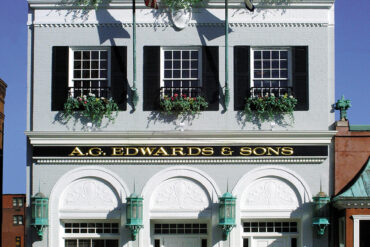When it comes to great winemaking, you can’t beat a blend
By Matthew Debord
HQ 109 | SPRING 2020
In a world of Cabernet Sauvignon, Chardonnay and Merlot, wines that don’t carry the name of the grape variety that they’re made from are unusual, at least outside of Europe.
Over the past four decades, an entire generation of American wine drinkers in particular has come to identify, and order, their beverages by what’s known as the “varietal.” This has the advantage of familiarizing Americans with the specific characteristics of Cabs, Chards and others, even if these wines are made with smaller amounts of other grapes.
There is, however, a type of wine that explicitly defies that approach, taking a more European angle. It’s called “Meritage,” and the best way to think about it is as a blend of varieties that isn’t afraid to be a mix.
Arguably the most famous and collectible wines in the world are, in fact, Meritages: the reds of France’s Bordeaux region. These wines are either predominantly Cabernet or Merlot, but they’re always blends, with grapes such as Cabernet Franc and Malbec mixed in. And they’re never labeled by what’s in the bottle, but rather by the chateaux that produced them. Think of Chateau Lafite Rothschild, for example.
That’s a bottle that can cost $1,000 on release, but don’t think that all Meritage is priced to the moon. I used to drink a cheap California Meritage that usually set me back no more than $15.
California is where most of America’s great Meritages hail from. And they aren’t always called Meritage; in many cases, the winemaker has come up with a proprietary name. But more on that in a moment.
Meritages are quite versatile wines. Traditionally, red Bordeaux is drunk with lamb, duck and other types of game, as well as steaks. But you can drink red Bordeaux with just about anything, although the top names are usually reserved for special occasions; in the U.S., they’re stalwarts of expensive steakhouses in big cities.
For my money, California Meritages offer a fantastic bang for the buck and can deliver a higher level of consistency on the quality front from vintage to vintage. This is because the vintner can vary the blend. If the Cabernet struggled that year, upping the Merlot percentage can add some body and fruit. Conversely, if the Merlot came in too fat, Cabernet or Cabernet Franc could be brought in to add some tannin and acidic cut.
When it comes to labels, many California Meritages have been around for decades, thanks to some pioneering winemakers embracing the European model before the Golden State really developed its own vinicultural identity (and consumers started to seek out grape names). Ridge Monte Bello is possibly the most legendary. It was created by winemaker Paul Draper, and in 1976 it notched a top finish against French wines in the infamous “Judgment of Paris” tasting that put California on the map.
Monte Bello is mostly Cabernet, with some Merlot and other reds blended in. The current 2016 release runs just north of $200. It’s a wine of sturdy structure, but also dense fruit; it could be aged for decades, although it’s not inconceivable to pull a cork and drink it right away, with a nice hunk of grilled meat.
Phelps Insignia is another fantastic blend, almost all Cab and no Merlot, but with Cab Franc, Petit Verdot and even a little Malbec tossed in. The wine spends 24 months in French oak barrels; and for the 2016 release, you’ll have to part with $300. The wine is stunning, though, a mellifluous and powerful red that I think might best be enjoyed with no food, so hypnotically interesting are the range of full fruit flavors and dazzling aromatics. The finish is typically a forever affair.
Before you think that all Meritage costs an arm and leg, I give you Robert Mondavi Private Selection Meritage, which can be found for $10. The wine uses mostly Cabernet sourced from California’s Central Coast, and it’s a great everyday red. I’ve pulled cork after cork and never gotten a bad bottle. It’s a label that punches well above its price tag.
Finally, Justin Isosceles is composed of about 80% Cabernet with Merlot and Cab Franc rounding out the blend. The wine comes from the Paso Robles region, which is my favorite for combinations of quality and affordability. Isosceles is in the same league as Monte Bello and Insignia, but it’s only $80 in the 2016 vintage. This is a great starting point for Meritage investigations because you can pull a cork right away and enjoy the rich, delicious flavors and their medium-long finish.
The bottom line here is that you often can’t beat a blend, and you should definitely think about adding a few to your cellar, or at the very least just bringing a few into your everyday drinking.





